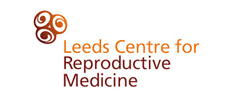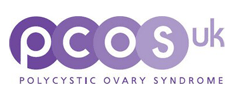In the national news this week we have heard the report of the first baby to be born by this novel technique to prevent the transmission of a devastating illness that would have led to an early death.
Listen to Adam discuss this on BBC Radio 4’s The World Tonight
The family from Jordan were treated by a New York team who, because the therapy is illegal in the USA, carried out the procedure in Mexico. An apparently healthy boy was born in April and the case is presented in an abstract to be presented at the American Society of Reproductive Medicine (ASRM). This begs the question as to why the case has not been reported in a peer-reviewed publication and thereby open to full and proper scrutiny of the technology used. There is no doubt that such a significant case would have been processed rapidly by any top scientific journal.
What is mitochondrial disease?
Mitochondrial disease is a group of disorders caused by dysfunctional mitochondria, the organelles that generate energy for the cell. Mitochondrial diseases are devastating for the individual and may lead to poor growth, loss of muscle coordination, muscle weakness, visual problems, hearing problems, learning disabilities, heart disease, liver disease, kidney disease, gastrointestinal disorders, respiratory disorders, neurological problems, autonomic dysfunction and dementia. This leads to severe disabilities and often death at a very young age. There are a number of different types of mitochondrial disease and if they run in a family, different family members can be affected in different ways. It is thought that approximately one in ten thousand people may have a mitochondrial problem – sometimes only leading to mild illness but the more severe forms become apparent in infants and lead to major disability and early death.
Most cells in the body contain a central nucleus, which holds the genetic material which determines bodily functions and in the cytoplasm (or jelly like fluid) around the nucleus are hundreds of mitochondria, which convert the energy of food molecules into the energy that is vital for normal cell function. If the mitochondria are abnormal then cells cannot function.
Mitochondria are inherited from the mother and defective mitochondria are therefore found in the egg. The new technology can be performed in two ways: The case reported used “spindle transfer” and involves using a donor egg, removing its nucleus, and then replacing it with the nucleus from the mother who has affected mitochondria and then fertilizing it with the father’s sperm to create an embryo. The alternative technique uses a fertilized egg and the fertilized nucleus will be removed and transferred into a fertilised donor egg that has had its nucleus removed (so called pronuclear transfer).
These techniques will enable families who have been devastated by the loss, often of several children, to now have healthy children in the future.
Thus there are three contributors to the embryo – the eggs from two women and the sperm of the father. The baby conceived in this way therefore inherits the genetic characteristics of its biological parents and inherits the healthy mitochondria from the donated egg, which contributes less than 0.1% of the DNA to the cell but will be continued through following generations – in other words permanently altering the genetic profile of the individual.
The UK has very strict regulation for what we can do and last year the House of Lords approved this treatment in the UK, where it has been pioneered in Newcastle. This has been after extensive ethical and scientific scrutiny and public consultation, run by the HFEA. The treatment hasn’t yet begun in the UK but the plans are for it to be performed in a single centre (Newcastle), carefully monitored and of course with very careful follow up of the children born. It is right and proper that we have strict but at the same time permissive regulation and appropriate plans in place to monitor the technology and babies born.
It is concerning that as the treatment is not allowed in the USA, the scientists went to Mexico where it isn’t regulated and this resulted in the baby reported this week. We do not have any scientific details, any details of how many times they may have attempted and failed or any idea of the surveillance and long term follow up of the baby/babies. We therefore have to be very cautious about this report, as the science has been the subject of peer review and is only an abstract at a meeting.
Listen to Adam discuss this on BBC Radio 4’s The World Tonight










